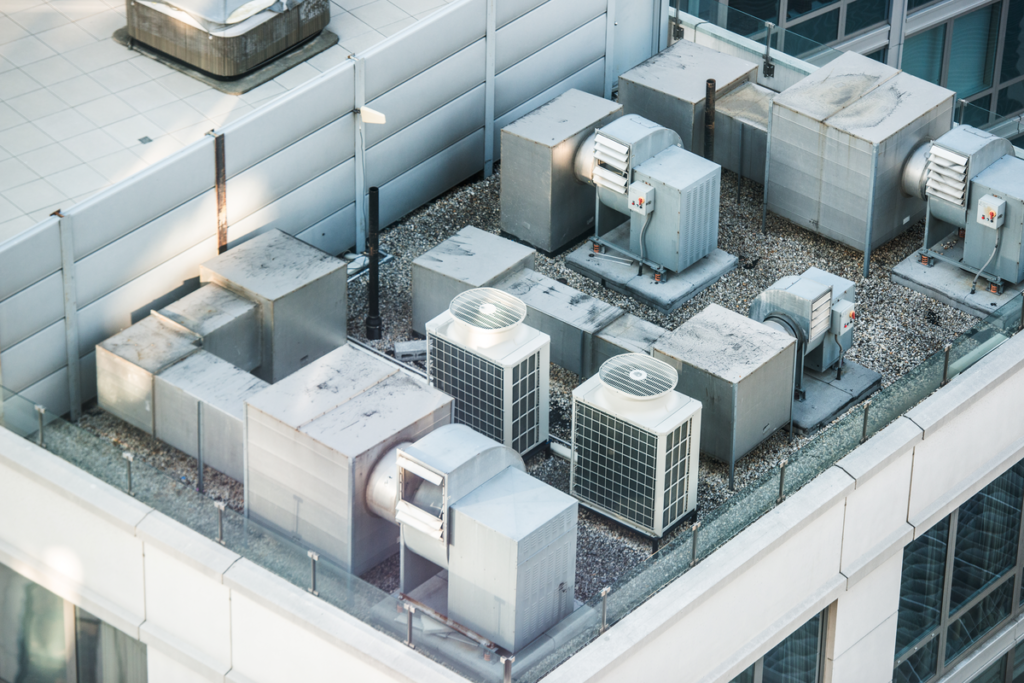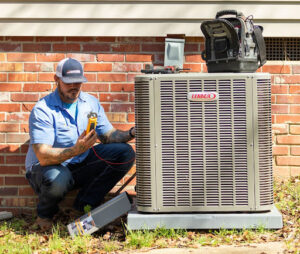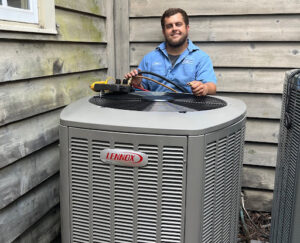Building automation (BAS) used to only be feasible for large commercial spaces with budgets just as big as their buildings. Like most technology, the longer it has been around, the more affordable it becomes.
Now there are more solutions than ever to remotely control your HVAC systems for maximum energy efficiency. Discover how a building automation system may be the right choice for your company’s commercial HVAC.
What Are Building Automation Systems in HVAC?
Traditionally, to control the AC in a building, you have to manually adjust each thermostat. Not only does this require you to be on-site to make those changes, but it’s also inefficient if you manage multiple locations or a lot of units in a large facility.
Building automation systems (BAS) connect the controls for your HVAC and other building systems like lights and security in one central control panel that can be accessed by computer or mobile device.
The centralized control of all your building systems comes with a host of benefits that go beyond convenience.
What You Can Control With a BAS—Building Automation System
The benefits of a BAS are far more robust than changing any thermostat with a few clicks. There’s a lot of flexibility now with what building functions you can connect to a BAS.
Depending on the size of your facility and your needs, your BAS can be configured to meet your unique needs.
Here are some of the most popular building systems that get automated with a BAS:
- HVAC units
- Air filter and ventilation systems
- Lighting
- Security
Not only does a BAS offer automated control of these building systems, but it also acts as a dashboard so you can see the status of each system at a glance. The BAS dashboard can be customized for your needs and preferences, so you only see what’s most helpful for you.
Benefits of a Building Automation System (BAS)
The benefits of an automated or wirelessly controlled system are many. Here are a few standouts:
- Save 5-15% of your overall energy consumption and reduce your utility bill.
- Old buildings can see as much as a 50% reduction in energy costs.
- Free your building manager to spend time on more important things than thermostat control.
- Keep your customers and team healthy with a system that monitors and adjusts ventilation based on how many people are in the space.
The value in a wireless system isn’t only in what systems you can control—it’s how you can control them. For example, you can lock your thermostats so employees don’t run the system at extreme temperatures or forget to adjust them before leaving the office.
A small dental office customer went from leaving their HVAC system 24/7 to a new programmable thermostat, and it paid for itself in two months.
“The most efficient AC is the one that’s off.” – Raymond Nalty
With a wireless system, you no longer have to rely on the last person out of the building to adjust the thermostat or wonder if you forgot to turn the air up while the office is closed on the weekend.
Wireless systems solve these hassles and help you save.
If you’ve never considered automated controls for your commercial building or dismissed the idea because of the cost, it’s worth reconsidering. Contact Environment Masters, your local commercial HVAC contractors, for more information.





